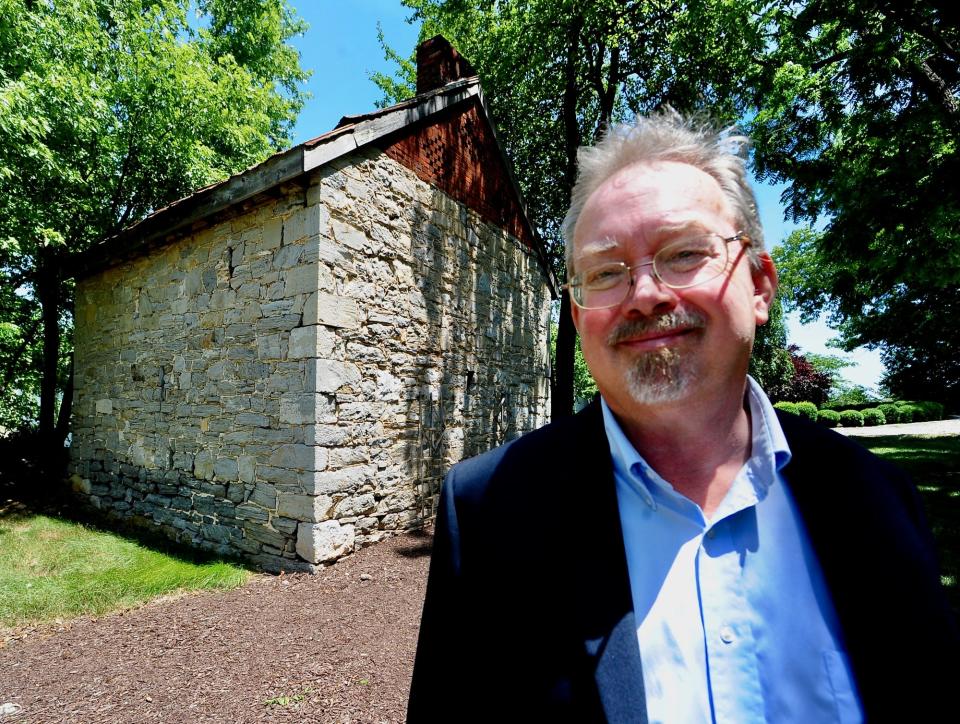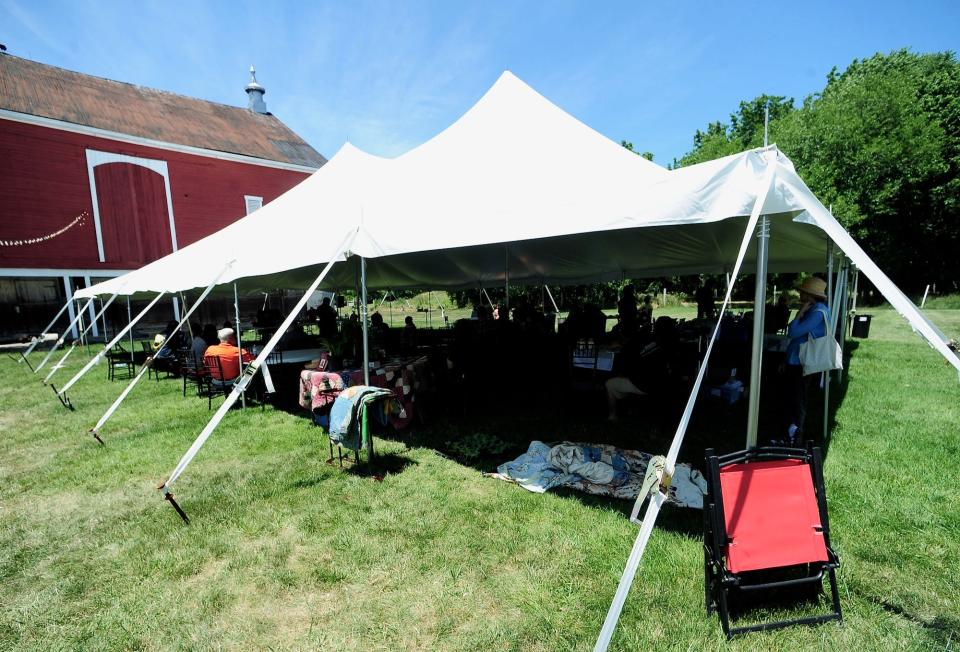Washington County marks Juneteenth with an African American story of seeking freedom
Washington County residents on Sunday could speak of their own African American history as the nation celebrated Juneteenth, the holiday to recognize the emancipation of enslaved people in the United States.
A Juneteenth celebration was organized at Rockland Estate along Sharpsburg Pike between Hagerstown and Fairplay. It was presented by the African American Heritage Association of Western Maryland, which has hosted other African American history events in the area.

The estate was where James W.C. Pennington escaped as an enslaved person around 1827. Pennington was trying to go north, but with limited directions, he ended up going east instead, said Dean Herrin, a retired National Park Service historian who spoke about Pennington during Sunday's event.
"He ended up in Reisterstown (Md.) before he realized his mistake," Herrin said during a break from festivities.
Pennington was captured, but he had a plan. He told his captors a fake story that he had chicken pox.
Surprised, they let him go and Pennington made his way to New York City, where he became a minister, teacher and an abolitionist, Herrin said.
Farms in this region did not have as much work as those in more labor-intense tobacco growing regions, Herrin said. As a result, it was typical for local slave-owners to lease enslaved individuals to other farms.
Pennington was first trained as a stone mason at Rockland Estate, Herrin said. Then he was trained as a blacksmith, which he worked at for nine years at the property. Herrin said Pennington often commented that his trades saved him because he felt he could take pride in them.
"It's kind of sad why he was here, but he became so famous," said Herrin.
Pennington's place in history was cemented when he wrote a book about his experience titled "The Fugitive Blacksmith."
More: Doleman Black Heritage Museum holds 3-day Juneteenth celebration
In Hagerstown: 'Multi-sensory experience:' 25-room 'boutique hotel' planned for Hagerstown
Downtown development: Latest features of downtown Hagerstown's revitalization to be unveiled Saturday
Rockland Estate still has the trappings of when Pennington was there. Herrin took a Herald-Mail Media reporter to a stone building where Pennington worked as a blacksmith.
Herrin said he was not sure when the Rockland Estate and home was built, "but certainly before 1808."
Presentations, music and other celebrations are typical among Juneteenth celebrations across the country, and they were also scheduled at Sunday's event, part of which revolved around a large tent where speakers and re-enactors appeared. It was scheduled to run between 11 a,m. and 6 p.m.

The re-enactors took on roles of abolitionists like Harriet Tubman, Frederick Douglass and John Brown, who stormed a U.S. arsenal in Harpers Ferry in 1859 to initiate a slave revolt.
Organizers of Sunday's event initially wanted to have it at The Kennedy Farm, where Brown planned his attack. But it was felt that attendees might have trouble finding the farm property off Chestnut Grove Road in the southern part of the county, said Richard Kline, president of the African American Heritage Association of Western Maryland.
This article originally appeared on The Herald-Mail: Juneteenth celebration held at site where enslaved person escaped

